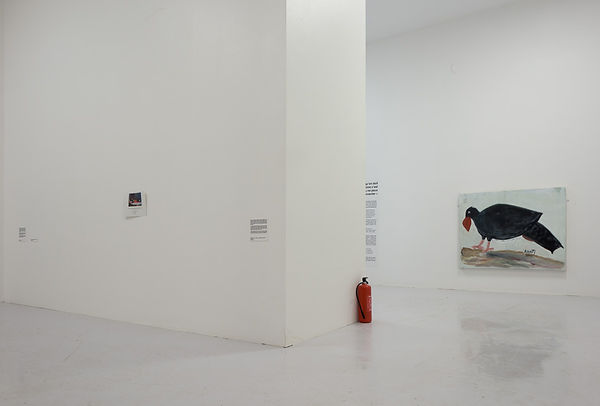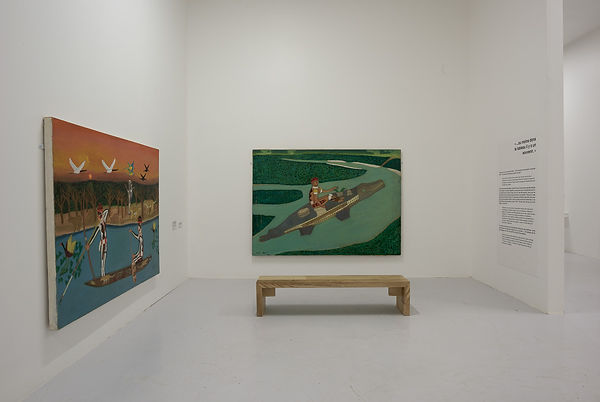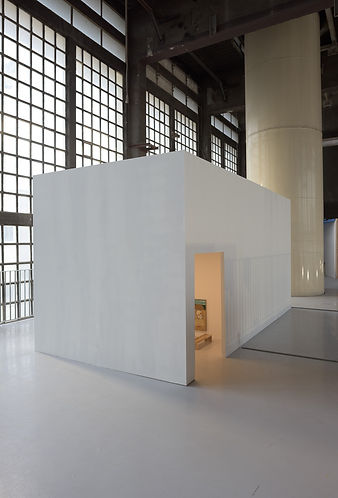
Musée A., 2019-2020 - with Emmanuel de Vienne, Sophie Moiroux, and many other.
Exhibition of Amatiwana Trumai’s paintings, in a museum at scale 1/4th – created for the 69th edition of “Jeune Création”
overall dimensions: h.250 × l.250 × L.500 cm / inside dimensions: h.140 × l.250 × L.500 cm
material : Amatiwana Trumai’s paintings, copies, scenography, architecture [wood, screws, mdf, filling compound, white paint, electric cables, LED lighting, glass], curating [loan management for painting and money, printed texts and cartels on PVC, vinyl lettering, Press release by J. Emil Sennewald] benches, fire extinguishers, ethnographic video by Emmanuel de Vienne, visitors, etc – and volunteer work of many, many friends, including – photos ©Enrico Floriddia.


Museum A. was specifically conceived to exhibit the works of Amatiwana Trumai. It elliptically and subjectively recounts 50 years of the career of this painter born in Brazil in the 1940s. His paintings, rarely presented in Brazil, are a testimony to his paradoxical position. Observer and mediator of his own culture, he also analyzed the look of the “whites” upon it, thus creating a transcultural practice made of appropriations, translations, exchanges and – more or less productive – misunderstandings; an epitome of what Mary-Louise Pratt called the “arts of the contact zone”.
Emmanuel de Vienne has been working as an anthropologist with the “Trumai” ethnic group since 2003. Along those years, Amati has been for him a professor, a friend, a foster cousin. Sophie Moiroux, anthropologist as well, also spent a long time discussing with Amati, and carrying an in-depth work on his painter’s practice. She is the addressee of Amati’s words – the “you” that collected and translated the interviews, providing the framework of the exhibition and the structure of its narrative.
Both of them brought back some of his paintings to France, and on behalf on his family tried to show and sell them since 2013. One episode is telling: the acquisitions committee of the Musée du Quai Branly in Paris, chose to consider the paintings as documents (to be accepted as a donation) instead of artworks (to be acquired, thus exhibited in this museum of “primitive arts”, and becoming part of the French heritage) supposedly for lack of sufficient aesthetic and historical value.
Emmanuel is my brother. Following this incident, we started debating Amati’s painting, the reasons of this refusal, the difficulties for such a production to find an audience – and in return the difficulties this production poses to our occidental value systems and their consecrated modes of reception.

« Jeune Création » appeared as an interesting context to address the work of Amatiwana Trumai, as well as some of the above questions. In this packed group show (55 artists, with an average of 12.5 m² for each), we had to reduce to 1/4th the dimensions of an achetypical occidental contemporary art museum. In this retrospective exhibition, only the artworks kept their scale, and visitors are forced to squeeze into a constraining white space, that sorts every characteristic of museal neutrality.


